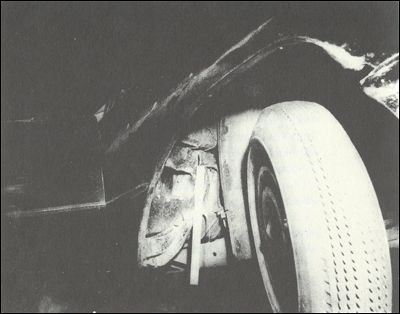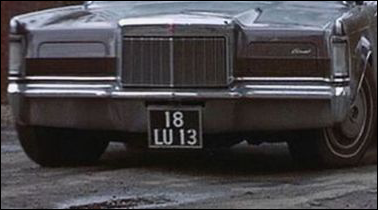The Real "French Connection" Drug Car

Photo © 20th-Century Fox.
The iconic movie “The French Connection” is based on a real-life drug-smuggling case that took place in New York City in 1961.
The case began on a hunch, when two NYPD Narcotics Bureau detectives saw a low-level mobster (Sal Boca in the movie) entertaining known drug lords at the Copacabana nightclub. Sensing something was up, the detectives started tailing Boca and soon realized that he was engineering a massive drug buy from a French heroin-smuggling ring.
The Frenchmen hid the heroin in the cavities of a car that they dispatched to the United States in the cargo hold of a cruise ship. As cover, they paid a French television personality, Jacques Angelvin, to take the car with him when he left on a tour of the United States. All they needed Angelvin to do was escort the car across the ocean; a stateside associate would pick it up at the dock.

Photo © NYC Municipal Archives.

Photo © NYC Municipal Archives.
In the movie, the car is a sleek 1970 Lincoln Continental Mark III, but the real drug car was a more modest 1960 Buick Invicta. Apparently, that model was popular with drug dealers—according to Robin Moore, author of the book on which the movie is based (The French Connection: A True Account of Cops, Narcotics, and International Conspiracy), "the 1960 Buick Invicta had a peculiarity in body construction conducive to the installation of...extraordinary, virtually detection-proof traps concealed within the fenders and undercarriage."
In fact, cops found the 112 pounds of heroin both in the rocker panel—as depicted in the movie—and behind the right front wheel well.

Photo © NYC Municipal Archives.
Because the Buick had just over 1,000 miles on it, police thought the ring bought it expressly for this operation.
The Story of the License Plates

Photo © NYC Municipal Archives.

Photo © 20th-Century Fox.
Both the real car and the movie car had European license plates, but they're not identical--the Buick's plate reads 18 LU 75, while the Lincoln's says 18 LU 13. Why the difference?
In France at the time of the real crime (1961), the last two or three digits of a license plate reflected where the car was registered. "75" stood for Paris, and "13" represented the Bouches-du-Rhône district of Marseilles. It's possible the filmmakers made the change for verisimilitude--the French Connection ring was based in Marseilles, not Paris, so they used a Marseilles plate.
